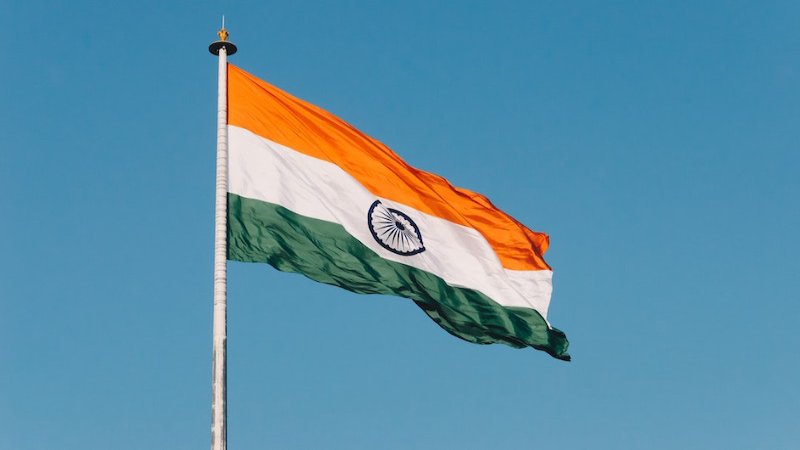
Whither India?
Strategic partner or strategic disappointment?
By Daniel Drezner, Professor of International Politics at the Fletcher School
The hard-working staff here at Drezner’s World has mixed feelings about whether India will be a robust strategic partner for the United States. To be fair, it’s safe to say that Indians feel similarly about the United States. For twenty years the two countries have increased their level of cooperation. As the war in Ukraine has demonstrated, however, older ties die hard.
Two recent pieces highlight this continued ambivalence. First, Ashley Tellis plays the skeptics card. Tellis was hawkish about China before it was fashionable, and so one would think he’d welcome India’s participation in any U.S. led strategy designed to focus on China. Instead, writing in Foreign Affairs, Tellis says explicitly that this has been and will continue to be a bad bet (seriously, that’s the title of the piece). Why?
Washington’s current expectations of India are misplaced. India’s significant weaknesses compared with China, and its inescapable proximity to it, guarantee that New Delhi will never involve itself in any U.S. confrontation with Beijing that does not directly threaten its own security. India values cooperation with Washington for the tangible benefits it brings but does not believe that it must, in turn, materially support the United States in any crisis—even one involving a common threat such as China.
The fundamental problem is that the United States and India have divergent ambitions for their security partnership. As it has done with allies across the globe, Washington has sought to strengthen India’s standing within the liberal international order and, when necessary, solicit its contributions toward coalition defense. Yet New Delhi sees things differently. It does not harbor any innate allegiance toward preserving the liberal international order and retains an enduring aversion toward participating in mutual defense. It seeks to acquire advanced technologies from the United States to bolster its own economic and military capabilities and thus facilitate its rise as a great power capable of balancing China independently, but it does not presume that American assistance imposes any further obligations on itself.
As the Biden administration proceeds to expand its investment in India, it should base its policies on a realistic assessment of Indian strategy and not on any delusions of New Delhi becoming a comrade-in-arms during some future crisis with Beijing.
Tellis is not suggesting that the United States disengage from India; rather, he concludes that the current policy has reached the moment of diminishing returns. His characterization of the Indian perspective does seem to jibe with what I have read and heard from Indian-based analysts.
Compare and contrast Tellis’ skepticism with Noah Smith’s very enthusiastic embraceof India eclipsing China as the world’s most populous country. Over the weekend he wrote a long post detailing India’s successful poverty reduction, growing economy, and increasingly popular haven for U.S. foreign direct investment that used to go to China. Acknowledging American unfamiliarity with the subcontinent, he closed with the following:
Between economic linkages and cultural exchanges, I see the possible emergence of “Indiamerica” — a more deep and comprehensive societal integration than “Chimerica” ever was. The chances of that will be boosted, of course, if the U.S. keeps taking in Indian immigrants on a large scale. Nor do I think those influences will be limited to the U.S.; India might form similar bilateral relationships with other countries like Japan, Indonesia, Vietnam, and lots of other countries. When a country has 1.4 billion people, a booming economy, and an open society, there’s really very little limit to its potential influence.
I admit that I don’t yet know what all the results of India’s rise will be. But I feel that it has to be something to celebrate — not just because it means hundreds of millions of human beings released from desperate poverty, but because it means a richer world. Economically richer, yes, but also culturally richer, politically more multipolar. It will be a world where power and wealth and global mindshare is no longer monopolized by the powers that carved out empires in the 19th century.
Are these two views on India reconcilable? It’s possible. Tellis is discussing what India is right now; Smith is suggesting what India might be in the future. If your time frame is coping with the current contingencies created by a rising China, then Tellis’ observations have value. If your goal is to fashion a long-term regional bulwark to cope with a rising China, then Smith’s optimism comes into play. The more that India and the United States develop sociocultural and socioeconomic ties, the more sustainable the relationship.
So, problem solved? Not exactly. While I am more optimistic about India than Tellis, I am far less certain that a rising India will develop the kind of cultural affinity with the United States that Smith anticipates. I’m also old enough to remember all the “Chimerica” talk 15 years ago, when the argument was that Sino-American interdependence would be the harmonious engine driving global order. Oops.
If the top U.S. strategic priority is to compete with China, then bolstering ties with India makes sense. The key is not to expect much in the way of strategic rewards anytime soon. Which is fine: the United States needs to relearn the value of strategic patience.
(This post is republished from Drezner’s World.)
